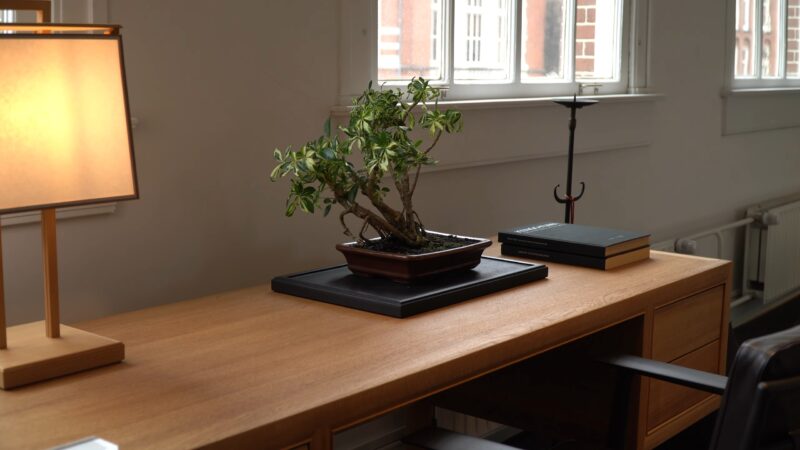Bonsai trees, miniature marvels of nature, captivate us with their elegance and ancient beauty. A common question among bonsai enthusiasts and beginners alike is whether these tiny trees can thrive without sunlight.
The short answer is yes, but there’s much more to it if we want our bonsai trees to not just survive but flourish. In this post, I will share methods that I use to grow and maintain my bonsai trees.
Key Highlights
- Bonsai trees need bright, indirect sunlight or suitable artificial lighting to thrive, not just survive.
- Proper humidity, temperature, and watering are crucial for bonsai health alongside light requirements.
- Choosing the right bonsai species for your environment and providing regular light adjustments can enhance growth and vitality.
The Importance of Light for Bonsai Trees
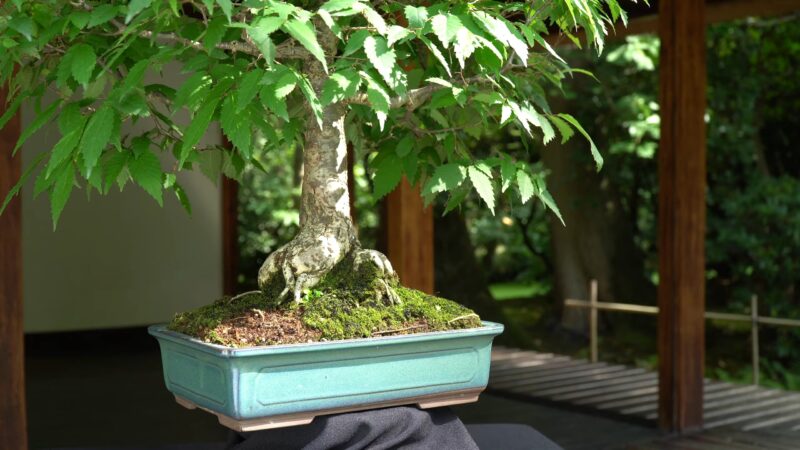
To put it simply, bonsai trees need light, much like any other plant. Sunlight plays a crucial role in photosynthesis, the process by which plants convert light into energy.
Without sufficient light, a bonsai’s growth can be severely stunted.
Some bonsai trees cannot survive without direct sunlight, such as non-tropical or temperate species, such as juniper, maple, or pine. These trees need a cold winter dormancy period, where they lose their leaves and slow down their growth. They also need more sunlight to prevent fungal infections or insect infestations.
What Type of Light Do They Need?
- Bright Light: For optimal health, bonsai trees require bright, indirect light. Direct sunlight is beneficial, but too much can harm certain species.
- Indirect and Direct Light: A combination of both lighting types ensures a bonsai receives the full spectrum of light needed for healthy growth.
- Outdoor Placement: Whenever possible, placing your bonsai outside can significantly benefit its health, exposing it to natural light and the elements.
Creating the Ideal Environment
Humidity and Temperature
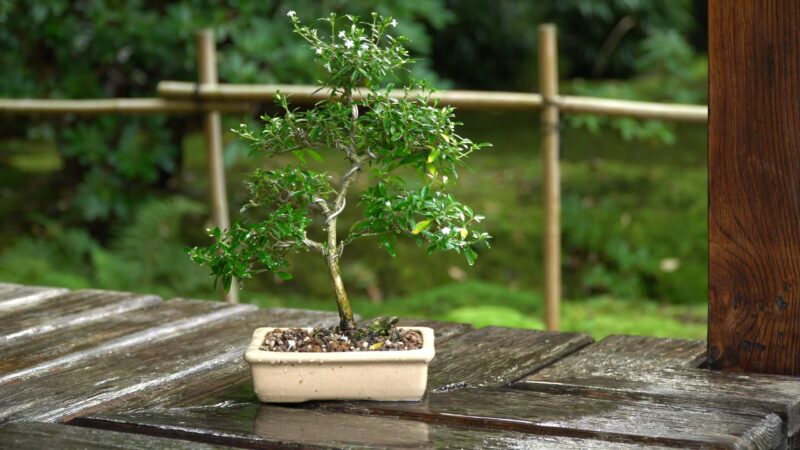
Bonsai trees mimic the conditions of their natural environment, which often means high humidity and specific temperature ranges.
- Humidity Needs: Nearly 100% humidity is ideal, achievable through the use of humid trays or regular misting.
- Temperature Control: During summer, maintaining a temperature around 50 degrees Fahrenheit is beneficial. Keeping bonsai away from drafty windows or doors helps in maintaining a stable temperature.
Light Requirements
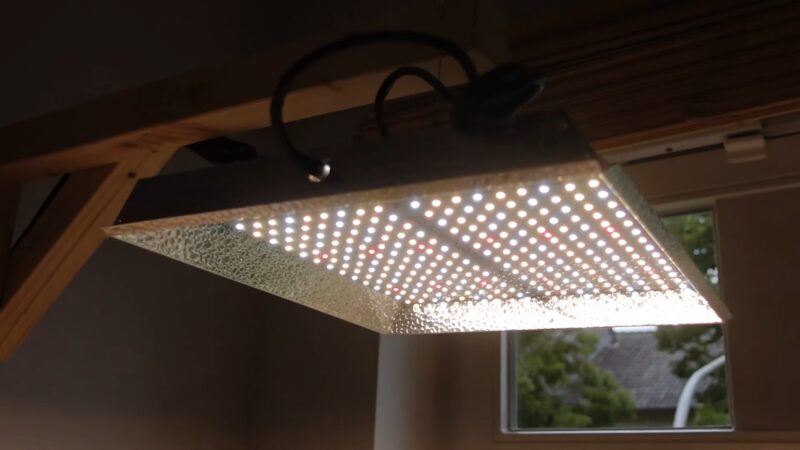
The amount of light a bonsai needs can vary depending on its species, but generally, 5 to 6 hours of sunlight per day is a good rule of thumb.
- Indoor Growing: If growing bonsai indoors, positioning them by east, west, or south-facing windows ensures they receive ample natural light. In some cases, artificial light sources like LED grow lights or full-spectrum fluorescent lights may be necessary.
Watering Practices
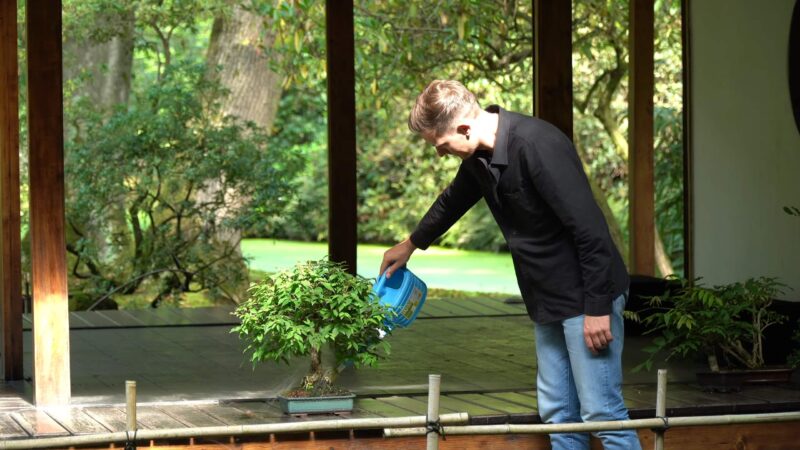
Proper watering is crucial for the health of a bonsai tree. Over or under-watering can lead to a host of problems, including diseases and pests.
Species Matters
Not all bonsai trees have the same light requirements. While most species benefit from direct sunlight, some thrive in shade or can manage well with artificial lighting.
- Shade-Loving Species: Some bonsai trees prefer shaded areas, making them suitable for indoor environments where direct sunlight is limited.
- Tropical Species: Trees like Ficus, Sweet Plum, and Hawaiian Umbrella can do well indoors with low or artificial light. They are particularly forgiving for beginners.
Signs of Light Deprivation
If a bonsai isn’t getting enough light, it may show several symptoms, including leggy branches, larger than-normal foliage, moldy soil, and increased susceptibility to pests and diseases.
Adjusting Light Exposure
Regular checks and adjustments to a bonsai’s light exposure can significantly impact its health and growth. Even indoor trees benefit from occasional outdoor exposure, provided the conditions are not too harsh.
Ideal Bonsai Trees for Indoor Environments
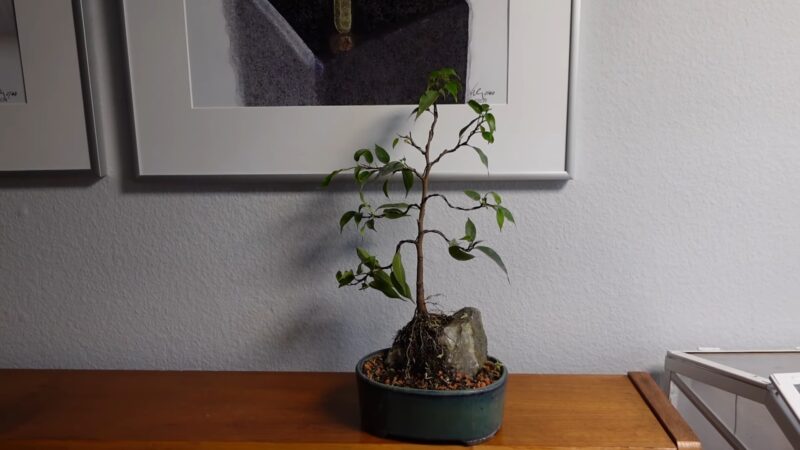
| Bonsai Species | Light Requirement | Indoor Suitability |
| Ficus | Prefers direct sunlight | Avoid shady spots |
| Sweet Plum | Needs more light than a windowsill | Blooms indoors |
| Jade | Thrives with reliable light sources | Good for outdoor & indoor |
| Hawaiian Umbrella | Tolerates low light levels | Perfect for beginners |
| Carmona | Sensitive to cold, avoid direct noon sunlight | – |
Some bonsai trees can survive in low light environments, such as indoors or in shady areas. These are usually tropical or subtropical species, such as jade, ficus, or Chinese elm. They can adapt to artificial light sources, such as fluorescent or LED lights.
Indoors Nurturing
Caring for bonsai trees indoors poses unique challenges, especially when it comes to ensuring they receive enough light.
However, with the right strategies, you can create a thriving environment for your miniature trees.
Positioning Your Bonsai
- Near Windows: South-facing windows are ideal for indoor bonsai trees, as they provide adequate sunlight throughout the day. However, during summer, be mindful of the heat and light intensity to prevent overheating.
- Artificial Lighting: For spaces lacking natural light, LED grow lights or full-spectrum fluorescent lights can simulate the sun’s rays, providing your bonsai with the energy it needs. These artificial sources should be placed close enough to the tree to be effective but far enough away to avoid heat damage.
Monitoring and Adjustments
Regular observation of your bonsai’s response to its light environment is key. Signs of insufficient light require prompt adjustments, whether it means moving the tree closer to a light source or increasing the duration of artificial lighting.
Seasonal Care for Outdoor Bonsai
Bonsai trees kept outdoors benefit from natural sunlight and the changing seasons, which are crucial for their dormancy cycles and overall development.
Sunlight Through the Seasons
- Spring and Fall: These seasons generally offer the best conditions for outdoor bonsai, with mild temperatures and adequate sunlight.
- Summer: Intense summer sun can be harsh on bonsai trees. It’s essential to provide shade during the hottest parts of the day to prevent scorching.
- Winter: While many bonsai trees require a period of dormancy, protection from extreme cold and frost is crucial. Some species may need to be brought indoors or placed in a cold frame.
The Right Species for Your Environment
Choosing a bonsai species that match your environmental conditions and lighting availability is crucial for its success. Researching and understanding the specific needs of your chosen species will ensure you can provide the best care.
FAQs
Can bonsai trees grow under only artificial light?
Yes, certain trees can grow under artificial lighting alone, especially tropical species adapted to indoor environments. However, natural sunlight is always preferable for its full spectrum of light.
How do I know if my bonsai needs more light?
Signs that it may need more light include pale or elongated foliage, weak growth, and a general lack of vigor. Adjusting its position or the light source can help address these issues.
Is too much sunlight a problem for bonsai trees?
While sunlight is vital for its health, too much direct sunlight, especially in hot climates, can lead to leaf burn and dehydration. Monitoring your bonsai’s exposure and providing shade can mitigate these risks.
Can bonsai trees recover from light deprivation?
Yes, they can recover from light deprivation if corrective measures are taken early. Gradually increasing their exposure to light and ensuring proper care can help them bounce back.
Do all bonsai trees require the same type of soil?
No, different species have varying soil requirements based on their native environments. It’s important to use a soil mix that matches the specific needs of your species for optimal health. Earlier, we wrote about organic fertilizers that improve soil and plant health, which could be useful for you.
How often should I rotate my indoor bonsai tree?
Rotating it every few weeks ensures that all sides receive equal light exposure, promoting even growth and maintaining the tree’s shape.
Final Words
While bonsai trees can survive without direct sunlight, their health and growth are significantly impacted by the quality and quantity of light they receive.
Knowing the specific needs of your tree and providing the right conditions lets you ensure your miniature tree not only survives but thrives, whether it’s placed indoors or out in the garden.
Keep in mind that bonsai care is an art form requiring patience, knowledge, and a bit of creativity to create a harmonious environment for these living sculptures.
